Affiliate disclosure: This post may contain affiliate links. Please see our Privacy Policy.
Ordering a side of beef is a convenient way to fill your freezer with high-quality local beef without breaking the bank.
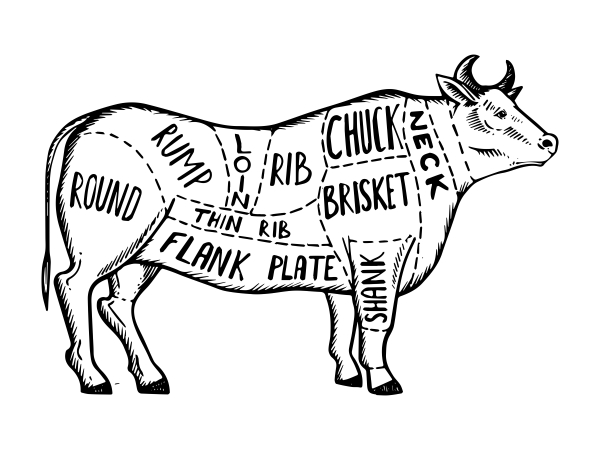
I love the peace of mind that a couple hundred pounds of meat in the freezer provides. Most years we raise all our own meat, and every fall we will our freezers to near bursting. After that, we salt cure or can anything that won’t fit.
This year, the only thing we’re raising is two preschoolers and an old toothless cat, and that’s all we can handle for sanity’s sake. Still, having humanely raised local meat in the freezer is incredibly important to us, so we spent the summer tracking down the tastiest meat in the area, sampling as much as possible.
The flavor of meat can vary significantly based on the breed of animal, it’s feed and how it’s raised. It’s important to sample before committing to a bulk purchase, and we tried meat from a number of farms that just wasn’t to our taste.
Once you settle on a farm and develop a relationship with the farmer, there’s no more economical way to fill the freezer than a bulk purchase.
In the past, we’ve raised all our own meat, including pork, chevon (goat), and all manner of poultry. We’d process and preserve everything on the homestead, so I’m no stranger to cutting up a side of meat.
Still, ordering a side of beef is pretty complicated. I looked at that cut sheet and scratched my head, before settling in to do a bit of research.
How Many Pounds of Beef is in a Side?
Generally, beef is ordered as a quarter, half or whole animal. The total size of the animal varies based on breed, age, and how it was raised.
On average, a whole animal weighs around 1,000 pounds at slaughter. Roughly 40% of the total weight is inedible portions, including the intestines, hide, etc. That means an average cow has a “hanging weight” of 600 lbs.
Generally, meat is sold by “hanging weight,” but that’s before any trimming that happens at the butcher shop. The butcher will trim out sinew, tendons, and other parts, removing about 25% of the hanging weight (or another 150lbs).
What’s left is about 450 lbs of meat in a whole cow (or 225 lbs per side).
Cut choices will vary obviously but as a rough rule of thumb, the hanging weight will translate into 25% waste, 25% hamburger, 25% steaks, and 25% roasts.
That means a side of beef will include (approximately):
- 75 lbs hamburger
- 75 lbs steak
- 75 lbs roasts
Our family tends to eat roasts more than steak, so we’re requesting that most of the lower quality (less tender) cuts be left as roasts, rather than cut into individual steaks. You can also request more of the meat as hamburger, which would affect the ratios as well.
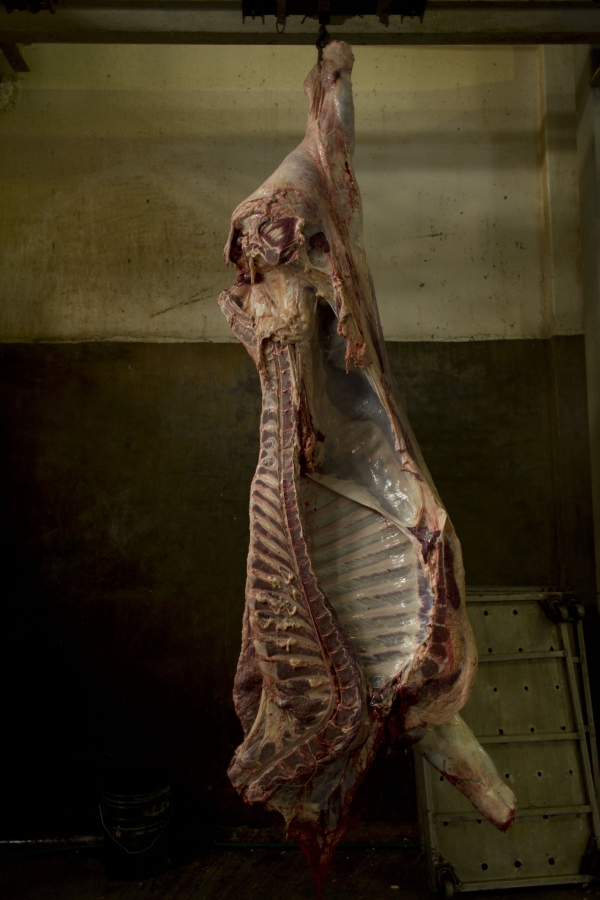
How Much Does a Side of Beef Cost?
The cost of a side of beef varies widely depending on where you live and how the animals are raised. Generally, organic grass-fed beef will cost more, as will beef on the east coast where costs are higher than the cattle rich western plains.
Buying a side of beef is usually done by hanging weight, which means the animal is slaughtered and cleaned, but still contains non-meat portions like tendon and bone (around 25%).
The grass-fed beef farm we selected charges $5.25 per pound hanging weight. If the whole animal has a hanging weight of 600 lbs, a side then has a hanging weight of 300lbs and would cost $1575.
As mentioned above, the actual cut weight will be roughly 225, so we’re effectively paying $7 per pound for every beef cut. That’s an exceptionally good deal given that ground beef currently sells for $8 to $9 a pound locally (even for conventional factory-farmed beef), and steaks $15 to $25 per pound.
(The price per pound will likely be much lower in the rest of the country, we just live in an area with higher food costs in general. Please check with your local farmer for the exact price per pound numbers. Regardless, it’s going to be much less than buying beef by the individual cut.)
How Much Freezer Space is Needed for a Side of Beef?
A well-packed freezer can usually hold 35 to 40 pounds of meat in a cubic foot of space. Strange shapes formed by a lot of bone in cuts (ie. Standing Rib Roasts, etc) will mean you need more freezer space.
A side of beef should require roughly 5 to 7 cubic feet of freezer space. Some farms suggest that you have at least 8 cubic feet of freezer space available for a side of beef.
That said, if most of the bones are removed and it’s packed efficiently, it can fit in much less space. We’re ordering from Templeton Farm here in Central Vermont, and they have very specific space estimates for their sides of beef:
“Customers who purchase a “half” will receive 3 boxes of meat, 2 of the boxes will measure 18″ long by 12″ wide by 9″ tall, which equates to 1.13 cubic feet each of storage space required or a total of 2.6 cubic feet, each of these boxes will weight about 90 pounds, the third box measures 18″ long by 12.5″ wide by 6.5″ tall which equates to .85 cubic feet and weighs about 45 pounds. For the 3 boxes, our customers will receive approximately 200 pounds of meat requiring 3.5 cubic feet of freezer space.”
In our case, we’re requesting all the bones, suet, and organ meat as well, which means we’ll need a good bit of extra space until all that can be processed into canned soup stock, soap, candles, and such.
Our off-grid setup has two DC freezers that run off our batteries, with and they’re 8.5 cubic feet each. We also have a big 14.5 cubic foot freezer from when we were processing pigs at home. Plenty of freezer space for a side of beef, still leaving space for the whole pig, lambs, 12 ducks and 10 chickens still to be added before the winter. (Can you tell we like meat?)
Talk to your farmer and get a specific space estimate before ordering a side of beef.
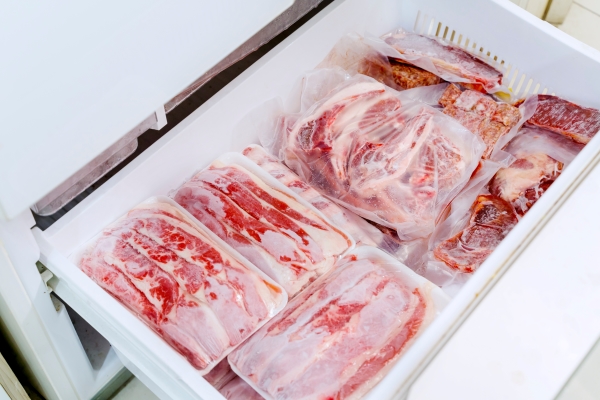
Cut Sheet for a Side of Beef
Filling out a cut sheet for a side of beef can be incredibly intimidating, and honestly, might be enough to turn you away from the whole project. Talk to your farmer, and see if they’ll talk you through it. With a bit of guidance, it shouldn’t take more than a few minutes to fill out.
Cut sheets will be different for every farm, and believe it or not, meat is actually butchered in different ways in different parts of the country. For example, a cut called “Flap Steak” is common here in New England, but elsewhere in the country, it’s just tossed in with the hamburger. Out west, Tri-Tip is popular, but it can be hard to find in the East.
Here is my cut sheet for a family of 4. I’ll walk you through each section shortly:
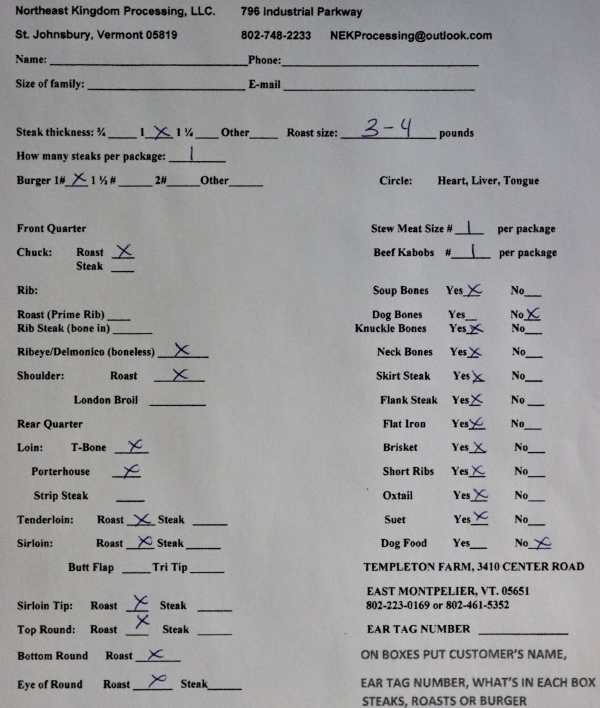
Steak Thickness, Roast Size, and Package Size
The first section is simple and just asks for a preference for steak thickness, roast size, and package size.
As a default, steaks are cut 1” thick, but you can request thinner (3/4”) or thicker (1 1/4”).
Package size depends on how you’ll use it, and we chose 1 pound packs of hamburger, stew meat, and kabob meat. Pack sizes are often available as 1 1/2 or 2 for families, and you can usually request bulk packs of 3, 5, or 10 pounds if needed.
Roasts can be cut smaller, but they’re generally cut as 3-4 pounds each.
Front Quarter Beef Cuts
Our cut sheet has three sections on the front quarter: Chuck, Rib, and Shoulder. This part of the cow also includes the brisket or breast of the animal.
All are heavily used muscles and tend to be the “low and slow” cuts. Most people cut this section in roasts, stew beef, or hamburger, but it also makes traditionally inexpensive steak cuts. There are, however, some really nice steak cuts in the rib section.
Beef Chuck ~ Made up of the neck, shoulder blade, and upper arm. These are generally tough, but intensely flavorful cuts of meat. It’s most often left as roasts because it has a lot of connective tissue and benefits from a long, slow cook. I’ve selected roasts here, but it also makes fine hamburger or stew beef if you’d like fewer roasts. If you select steaks, this is made into inexpensive steaks generally sold under the names flat iron steak and Denver steak.
Rib ~ As you might imagine, this includes the meat on and around the ribs. There’s actually a good bit of meat along the spine above the ribs, which is most of the bulk of this cut. A prime rib roast or standing rib roast is a large cut that includes several pounds of meat above the ribs, along with the ribs attached. It makes a great special occasion dinner and feeds a crowd. Skipping that cut means you’ll have more individual steaks, as either rib steaks (with bone attached) or Delmonico Steaks (same cut but no bone).
We skipped the prime rib since we rarely have dinner company, and went with Delmonico steaks which have the bone removed. It takes up less freezer space, and we’ll put the bones to soup stock anyway.
Short ribs or whole sides of beef ribs are also in this part of the animal, and these days many people skip them and add the meat to hamburger. They’re pretty fatty, and if you add them, your hamburger mix will be less lean. We love ribs, and I’ve selected short ribs.
Shoulder ~ Generally cut into roasts for slow cooking, but it can also be cut into braising steaks for slow cooking.
Brisket ~ Often left as one big roast, the brisket can be intensely flavorful if cooked properly (sometimes for 12+ hours). I’ll always pick brisket, but I love to cook. If you’re more into quick weeknight meals, have this cut ground into hamburger instead.
Rear Quarter Beef Cuts
The rear quarter has quite a few choices and is traditionally made into both roasts and steaks. Our cut sheet included sections for loin, tenderloin, sirloin, sirloin tip, top round, bottom round and eye of round.
Loin ~ Some of the best quality steaks come from the beef loin. T-Bone and porterhouse steaks are nearly the same, containing two different muscles and a T-shaped bone. There are several in aside, and the T-bones are cut from the front with less loin muscle and porterhouse near the rear with a larger loin muscle.
A single side of beef has both T-bone and Porterhouse cuts of varying sizes. If the bone is removed, you get a strip steak. Really the choice here is between bone-in or bone out, and the size of the steaks.
Tenderloin ~ Arguably the best cut of beef, and a single side of beef only has a few pounds of tenderloin. This can be left whole as a roast, or cut into tenderloin steaks.
Sirloin ~ This section of the cow can go either way, as flavorful roasts or mid-grade steaks. There are no fancy expensive cuts of meat in the sirloin, and the choice here is really whether you’d like more roasts or steaks in your side of beef. I’d rather have more roasts, and skip mid-grade steak cuts.
There are also a few lesser-known cuts in this section, one called flap steak or butt flap steak (great name, I know) and another called tri-tip.
The flap steak is a New England thing, and it’s just ground into hamburger in the rest of the country. It’s a low-quality cut, but some people have an attachment to it (so request it specifically if that’s your thing).
Tri-tip is hard to find in New England, but it’s a prized cut out west as a fancy grilling cut. It can be tricky if you don’t know how to cook it, so request it if you know what you’re doing (and skip it otherwise).
Sirloin Tip ~ Though it has “sirloin” in the name, the sirloin tip is a much tougher cut of meat. It can be cut into steaks but is most often left as a roast for slow cooking or ground into hamburger.
Top Round ~ A tough cut of meat that is usually left as a roast. If you select steaks here, expect to need to pound the meat to tenderize it.
Bottom Round ~ Even tougher than the top round, this is a slow cooking cut. My cut sheet didn’t even give the option to cut this into steaks, it’s only listed as a choice because you can elect to have it left as a roast or ground into hamburger.
Eye of Round ~ Another slow cooking cut of meat, it’s often left as roasts or cut into stew beef. It’s also made into the more economical steaks, and hamburgers.
In this section, we chose to porterhouse and t-bone steaks for celebration dinners. We left the tenderloin as a loin roast (rather than cutting it into steaks) for our holiday meal and chose roasts for all the tougher slow cooking cuts for winter pot roasts.
Specialty Cuts and Oddments
The right side of our cut sheet has yes/no checkboxes for bones, organ meats, and specialty steaks.
If you select “no,” the butcher or farmer will just keep the soup bones/organs/suet/etc. Note that you’ve paid for it in the hanging weight either way, but if you can’t use them there’s no need to bring them home.
For the specialty cuts, the sheet is asking if you’d like them included or ground into hamburger. This is all a matter of personal preference, and I chose to keep them because I’ve never tried most of them. We have a large meat grinder at home that we use to make homemade sausage anyway, so hamburger is always an option later.
All of these are tougher cuts and “economy” steaks, including flank steak, skirt steak, flat iron steak, brisket, and short ribs.
Deposit & Pickup
Since you’re in essence special ordering a side of beef cut to your personal specifications, it’s only reasonable that the farmer is going to require a deposit. That may not be the way most of their customers prefer their beef, and if you back out they may be in a bind.
Our farmer requested a $350 deposit to take the order, with the balance due at pickup.
Understand that this is not a quick process, and once the beef is slaughtered, it will have to hang for several weeks in a meat locker before it is butchered into cuts. Even if you’re ordering in the fall near slaughter time, don’t expect delivery for a month or more.
It’s mid-August now, and we’ll take delivery of our side of beef in early October.
Be sure to check back for tutorials on cooking through a side of beef this winter!
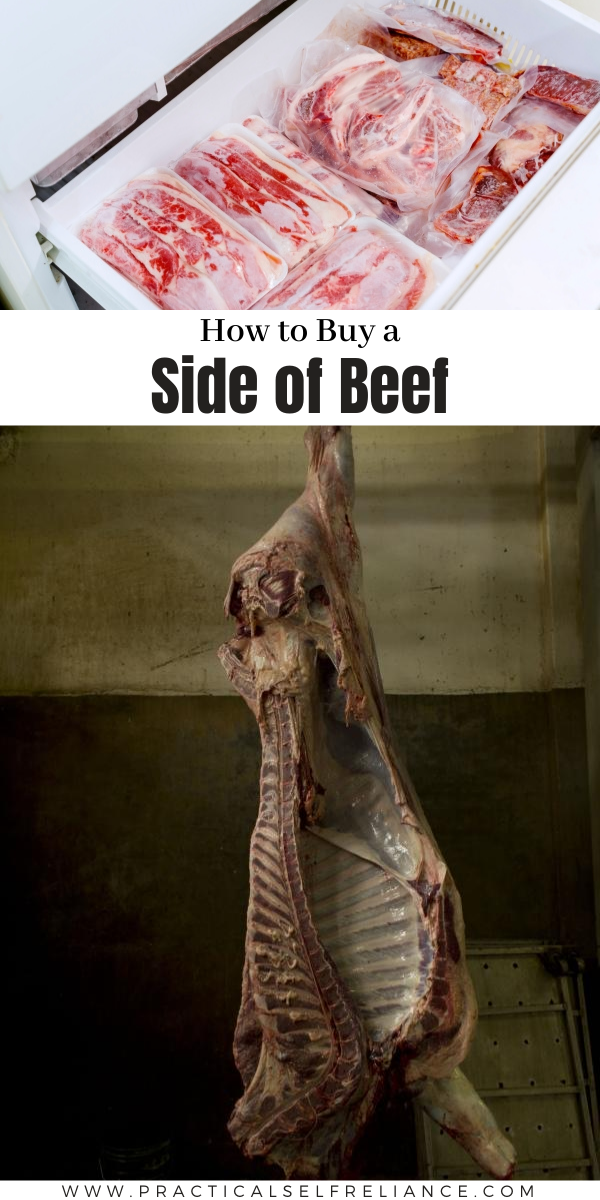

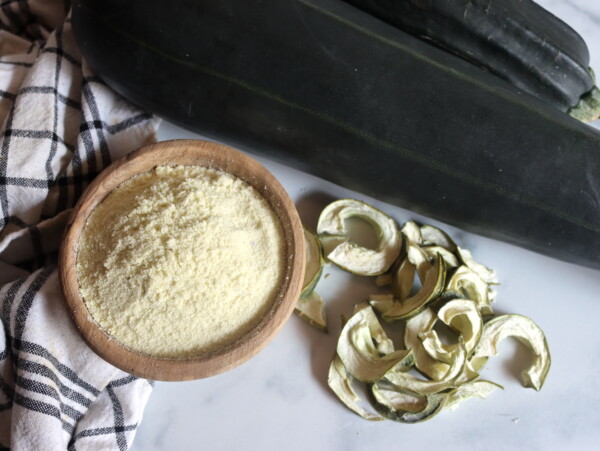


Wow – this was so helpful I went from stumbling across to buying a new 8 cf freezer! Thank you so much for the insight and guidance.
You’re quite welcome and I’m so glad it’s helpful to you!
I live in Alaska and beef prices are high. We just paid $5.25 a pound for hanging beef and we will also pay the butcher $1.25 a pound. I’ve heard of other areas here charging $10 a pound. This is our first time buying a side of beef so your information was very helpful. TY
You’re very welcome. So glad it was helpful for you.
Our butcher charges a kill fee, currently $80 plus cut & wrap fee, currently $0.65 per pound. The meat is wrapped in plastic & then butcher paper. The price you quote of $5.25 per pound. My question is does this include the butcher fees or what the farmer charges per pound? Our butcher is currently 8 months out but some are even further out due to demand. It looks like a lot of farmers are thinning their herds due to the cost of hay going up as a result of the fires here in the west.
Yup, that price included the butcher and cut and wrap fees, that was the total price. It’s different now though, prices have gone up quite a bit in the last year or two.
This is all honest, complete information on buying beef direct from the farmer! Will you send me the content by email and of course I will give you credit.
We raise cattle for beef and although the pricing varies the rest is the same. The only thing I would add is the importance of a trusted processor.
Thanks again!
Mary Haer
Weston, MO
Whoa! where do these people live? 25$ for steak???? Beef here (Sw PA)is 3$ a lbs for burger, 4.50 Lbs for roasts, and 7$ for prime cut steaks. Whereever they are, they need to move!
Everything is quite expensive here (Vermont), and yes, those are real prices in 2020 and 2021. Kind of amazing that yours are still so low, that’s what they were when I was growing up in California around 25 years ago. I think California’s prices are a bit higher than ours here, so we’re not even the worst. If you’re still enjoying 1990s meat prices in PA that’s awesome, enjoy it while it lasts.
I love your site, it is so down to earth and, very informative! We are farmers and sell beef. I really would like to print your article but there isn’t an option to do that. I don’t seem to be able to copy and paste either. 🙁 Have saved this article to Pinterest. Thank you for all of your well written and informative articles. Sincerely, Kathryn
Hi Kathryn, I just emailed you a word document of the article. Hope it’s helpful with your beef operation. Best, Ashley
Brilliant article!
We direct market and these are exactly the questions we get asked.
Now I have your amazing post to answer those questions more eloquently and yet simply.
Thanks for help in educating both consumers and producers.
You’re quite welcome!
this is a very helpful article. thanks for writing it. very thorough and detailed but not so much that we get lost in the writing. my biggest fear in ordering a 1/2 beef side is having enough space for it in our 14 sq ft freezer which also houses our existing frozen food. I just may have to buy yet another freezer just for the beef.
Thank you very much, this was incredibly helpful and informative. I don’t think I will purchase a side of beef this year, but I would not be afraid to do so in the future. Enjoy your freezer-full of grass fed beef.
This was such a crazy helpful article! So glad i stumbled onto your website! Thank you!